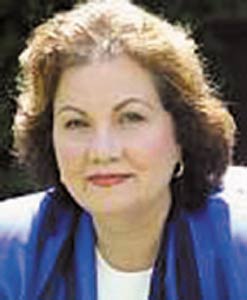A new state law could allow the Valley Transportation Authority
to put smaller, eighth-cent tax hikes on the ballot, reversing a
restriction that limits the agency to asking voters for a
quarter-cent or more. Supporters say SB264 will allow the VTA
greater flexibility when seeking funds, and stressed that any tax
increase still has to pass muster at the ballot box
– no matter its size.
Gilroy – A new state law could allow the Valley Transportation Authority to put smaller, eighth-cent tax hikes on the ballot, reversing a restriction that limits the agency to asking voters for a quarter-cent or more. Supporters say SB264 will allow the VTA greater flexibility when seeking funds, and stressed that any tax increase still has to pass muster at the ballot box – no matter its size.
“There’s no downside,” said VTA board member Greg Sellers, who represents Morgan Hill. “It merely provides a new option for the VTA, to consider smaller tax increases. It’s logistical.”
But opponents who slam the VTA as fiscally irresponsible fear the bill would let the agency slide smaller tax increases past voters, and undermine efforts to rein in VTA spending.
“VTA is trying to low-ball the sales tax increases it wants to ask voters for, to sell it better to them,” said Eugene Bradley, founder of the VTA Riders Union. “Until VTA really does some reforms, such as having a directly elected board that at least shows they’re being more fiscally responsible, they shouldn’t be allowed to ask voters for another penny of their money – period.”
The bill passed the state Senate by a 23 to 13 vote in May, and recently passed the House of Representatives’ Local Government committee 5 to 2. Counties are currently allowed to bend the quarter-cent rule for library taxes: Fresno, Nevada, Solano and Stanislaus counties have already passed eighth-cent taxes to fund libraries, and San Mateo County allows eighth-cent taxes to be proposed for local parks.
State senator Elaine Alquist (D-Santa Clara), who penned the bill, says VTA asked her to carry the law. In return, Alquist asked the VTA to demonstrate better accountability.
“That has been the case,” Alquist said. “They’ve reorganized their infrastructure, they’ve hired a new CFO, and their credit rating has gone up to a triple-A – which is very good.”
Alquist said she and Assemblywoman Sally Lieber (D-Mountain View) would also call for a state audit of the VTA, to ensure that existing funds are wisely spent. The VTA has long fended off criticism of its spending – criticism recently validated in a March report by the Hay Group, a Philadelphia-based management consulting group hired by the VTA. The Hay Group found that VTA lacked focus and oversight, and dubbed its financial future “uncertain and unstable.”
“It’s fair to say that VTA has made some progress,” said Margaret Okuzumi, executive director of the Bay Rail Alliance, which opposes SB264. “However, none of those changes have altered how unfair the governance structure is … VTA is not a democratic institution.”
Okuzumi criticized the board’s structure as tilting toward San Jose, and consequently prioritizing projects like the proposed BART extension to San Jose over other, more practical improvements, she claims. Sellers’ seat on the board rotates between Morgan Hill, Gilroy and Milpitas, Okuzumi noted.
“How does Milpitas represent South County?” she asked. “The reforms haven’t gotten to the heart of the matter: The financial oversight is missing, as the Hay Group reported.”
“It’s an inaccurate criticism,” countered Bernice Alaniz, VTA’s deputy director of marketing and public affairs. “We have an excellent reputation for building projects on-budget and on-time, and we’ve made extraordinary efforts to be more stable financially” – including hiring the Hay Group.
The VTA’s strongest supporter is the Silicon Valley Leadership Group, which supports SB264. Laura Stuchinsky, SVLG’s director of transportation and land use, said arguments against allowing lower taxes “don’t hold a lot of weight.
“It’s possible – though it clearly hasn’t been decided – that VTA may need to go back to the electorate for more funds, to complete the Measure A program,” said Stuchinsky. Measure A, passed in 2000, hiked sales tax by a half-cent to connect BART to San Jose, provide light rail throughout the county, and expand and electrify Caltrain, among other projects. “We want them to go back with the smallest amount they can ask for to do the job … Ultimately, the voters will have the final say if a measure was put on the ballot.”
But for the VTA’s critics, less is still too much.








